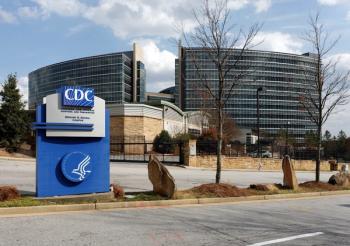
Your Voice: Concern over hospitalists solved
Hospitalists concerns, JAMA and the opioid crisis are the hot topics in this edition of Your Voice.
In her essay “Transitional care: The unintended consequences of hospitalists’ rise (July 10, 2016),” Mary Bauman, MD expressed concern over the growing role of hospitalists in what she refers to as “transitional care.”
For many patients, seeing new doctors who don’t know them can be intimidating of course.
Here is how I deal with the problem:
I try to make at least one phone call to my patients when admitted to explain what is happening. And if they are admitted through the emergency room I speak to the physician there.
For those patients who are sicker I try to make a “social call” to the hospital.
I am not always successful in doing these things, but it helps to bridge the “transitional care” gap.
Also at my hospital, from time to time, we discuss ways to improve communication between physicians and hospitalists.
All things considered, primary care physicians depend heavily on the help of hospitalists. It would be impossible for them to carry on an office practice and see patients in the hospital.
Edward Volpintesta, MD
Bethel, CT
Appalled at CDC handling of opioid crisis
The question was raised whether legislative action should be required to aide in resolving the opioids crises. Are you kidding me? Some seem to think that legislative action is the answer to just about everything these days and now want legislators to draft laws telling us how to manage patients with pain when they don’t know how to care for their febrile three-year-old at three in the morning so they bring them to the emergency room.
I have been on the front lines of pain control as an emergency physician at a level one trauma center for 30 years and unequivocally feel this “opioids crises” phenomenon placed squarely on the backs of primary care physicians, has caused an overreaction by the medical community lead by the CDC.
This as a result of outside pressures largely by the media with high profile cases, pressures from the government and the medical community under pressure to do something-anything to curb the rise in opioids overdoses and rise in heroin use.
The CDC stepped in and imposed unrealistic guidelines in the use of opioids. We went from a compassionate aggressive approach-you know the pain scores being requested every few minutes and as soon as the patient stepped into the ED with liberal use of opioids with an emphasis on comfort care-to treatment strategies for those acute pain patients requiring opioids prescriptions (unless of course you had renal colic which would bump you up to a week’s worth of meds) and God forbid you have chronic pain without a diagnosis of cancer.
What on God’s green Earth did the CDC base this on? How did they come up with these numbers? Did someone sitting at the CDC roundtable have the misfortune of passing a stone prompting a little more leniency with those patients. And who came up with the idea that unless you have cancer your chronic pain isn’t worthy of adequate pain management?
There are those, including myself, that believe the CDC actions may likely lead to major unintended consequences such as not only under treatment in pain management, but an escalation of the heroin epidemic, making the crises much worse.
When will we learn that establishing medical guidelines based on poor evidence will more than likely result in poor outcomes. Certainly some lives may be saved of those who misuse or abuse opioids, but at what price to those in our society which struggle with quality of life issues due to pain?
Recently, a department head at a prestigious medical facility in a talk on the opioids crises told the listening audience, “if you have a patient with chronic pain issues that doesn’t have cancer and your considering opioids, DON’T! Period. End of story.” I find this extremely disturbing as a medical provider. Yet this seems to be the culture being cultivated by those in the CDC camp.
For the CDC to come up with such indiscretionary guidelines for opioids use based on little if any good evidence-even so far as plugging in numbers, I think is quite unwise and would expect more from this trusted agency. They went from adjusting the shower temperature knob from being a bit too hot, to ice cold, with hundreds of thousands of patients in the shower.
Maybe if such a thing was orchestrated 20 years ago. a good faith pass would be in order, but in this day and age of evidence-based medicine I find it appalling.
Rodney M. Staats MD
Wichita, Kansas
Disappointed in JAMA, physicians deserve more credit
In reference to the article, “Irresponsible to say physicians can be bought to put patient care second (June 25, 2016),” I am very disappointed by JAMA’s article. It is an insult to the integrity of physicians to think that we are influenced by a sandwich at lunch. Pharmaceutical companies provide research and development of new medications that change patients’ lives. I rely on companies to give me information about new medications so I can learn what is available and then make an educated decision on what I prescribe.
Physicians go to school for many years to understand pharmacology of medications and make ethical decisions for our patients. It is truly disheartening that we are not given more credit for our ability to make impartial decisions.
Deborah Winiger, MD
Vernon Hills, Illinois
Newsletter
Stay informed and empowered with Medical Economics enewsletter, delivering expert insights, financial strategies, practice management tips and technology trends — tailored for today’s physicians.















